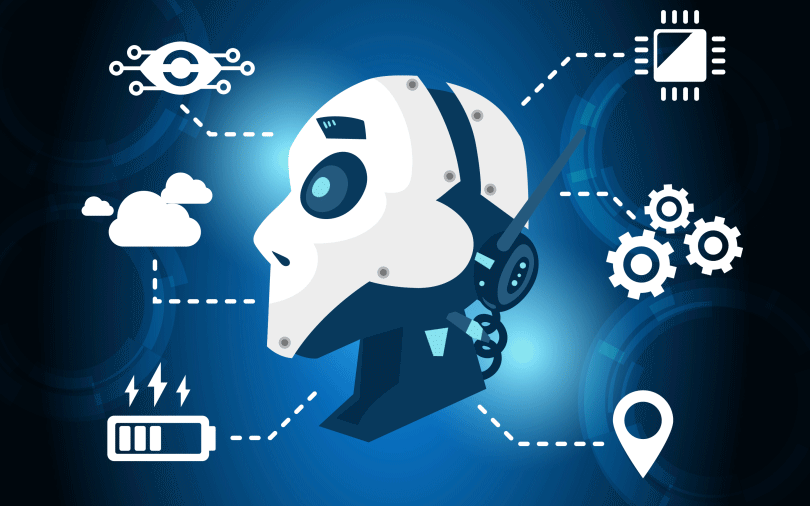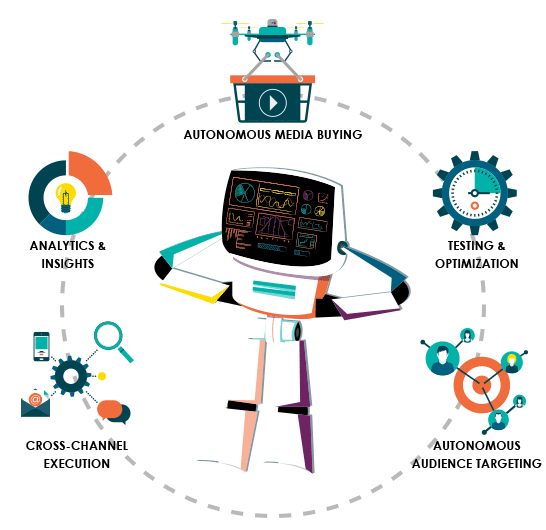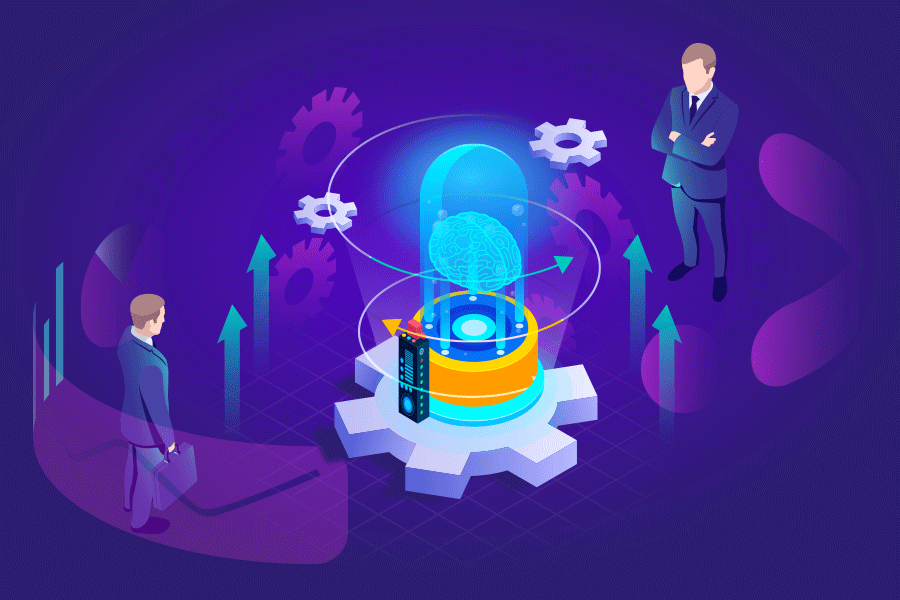
Becoming
A Polymath
The Oxford Dictionary defines a polymath as “a person of wide knowledge or learning.”

Why ICAN Online Pushes for Students to Become Polymaths?

First of all, polymaths are able to understand complex problems and offer creative solutions by drawing from their wide variety of knowledge. They can make connections between seemingly unrelated subjects with ease.
Being a polymath instead of a specialist is an advantage, not a weakness. People who love learning across fields can use that tendency to be more financially successful and impactful in their career. What follows is the most comprehensive case for becoming a polymath that has ever been created to my knowledge.
The future is clearly moving towards the Artificial Intelligence Phenomenon. Being a person who can solve complex problems is clearly an advantage in the future since AI is leaning towards specialization and being an expert in one job can be obsolete.
The ICAN Polymath Program
Being a Modern Day Polymath is not a one session class. It has become harder to find such after graduating from the university. As we make our way through school, we’re told constantly to specialize. Eventually, we get to the point where we are considered ‘experts’ in our field.
ICAN is developing a program that will teach students to expand their knowledge and widen their skills in order to become a polymath.

ICAN: Ad Astra and Minerva
Traditional schooling is no longer a futuristic approach. If not updated, the quality of education the students are getting may no longer be useful in the near future.
The approach is to be like Ad Astra and Minerva.
Ad Astra was an experimental school on the campus of SpaceX in Hawthorne, California from 2014-2020. The independent spinoff school is now called Astra Nova and more information can be found at astranova.org.
Minerva is intentionally designed to develop your intellect across multiple disciplines, as well as critical life skills, professional capabilities, and key aspects of your personal character.
ICAN Artificial Mind
Artificial Intelligence (AI) and Machine Learning (ML) are part of our everyday lives in so many ways! They are everywhere as spam filters, recommendation engines, translation services, chatbots and personal assistants, search engines, and fraud detection systems. You can find them in our mobile apps, self-driving cars, and eCommerce platforms that suggest products based on previous behavior.
Like most adults, kids lack the opportunity to explore AI processes and enhance the understanding of basic Machine Learning concepts and essential building blocks. Understanding the fundamental concepts is becoming important for people of all ages, including children, who are growing up in an environment that integrates AI and ML products more than ever before.

LESSON
DESCRIPTION
Machine Learning for Kids
Machine Learning for Kids is a free, easy-to-use, web-based tool, built by Dale Lane using APIs from IBM Watson to introduce children to how machine learning systems are trained and used in real-world AI applications. It provides hands-on experiences for training machine learning systems that recognize text, numbers, images, or sounds. It teaches coding to children by adding these systems to educational coding platforms like Scratch and App Inventor and helps children create projects and games. First made available in 2017, the tool is now being used in thousands of classrooms in schools, volunteer-run coding groups, clubs, and by families around the world. The tool provides an admin page for teachers to manage access for their students.
Experiments with Google
Experiments with Google is an open-source platform full of great ideas on AI, AR, VR, Voice experiments, Android, and even Chrome experiments. The tool allows us to run plenty of simple AI experiments that make it easier to explore machine learning through pictures, drawings, language, music, and more. Teachable Machine, for instance, enables kids to create machine learning models without any coding skills. It helps you train a computer to recognize your images, sounds, & poses, then export your model for your sites or apps. MixLab is an experiment that creates music using simple voice commands. Voice Experiments make it easier for developers to create new voice experiences that work on devices such as the Google Home, or browser, while AR Experiments allow them to experiment with augmented reality in exciting ways.
IBM’s Machine Learning for Kids
Machine Learning for Kids, powered by IBM, is another web-based, 1-4 hours long activity kit that helps students train simple machine-learning models and create games and interactive projects. The kids can input a dataset, and the machine will create links that help it answer questions that are not in the data. They can pick from over two dozen activities to fit your time and audience age requirements. All that you need is a computer with internet access.
Cognimates by MIT Media Lab
Cognimates by MIT Media Lab is an open-source AI education platform for parents and children (7-10 years old) to learn how to build games, program robots, and train their own AI models. Designed to extend coding to AI education and literacy, Cognimates is based on the Scratch programming language that provides a unique library of tools and activities for AI education. Some activities are mediated by embodied intelligent agents that help learners scaffold learning and collaborate more effectively. The platform allows children to program and customize embodied intelligent devices, such as Alexa and the smart robot Cozmo.
Scratch
Scratch is a free, block-based visual programming language and online community for children. Developed by the MIT Media Lab for ages 8 to 16, but used by people of all ages, Scratch allows users to program their own interactive games, stories, animations and share their creations with the online community. Till now, more than 40 million projects have been shared by over 40 million users in more than 150 different countries. The tool is available in 40 languages.
eCraft2Learn
eCraft2Learn project enables children and non-expert programmers to build AI programs in Snap!, a visual programming environment similar to Scratch. It is an ecosystem, based on digital fabrication and making technologies for creating computer-supported artifacts. It supports both formal and informal learning. The ecosystem involves a five-stage pedagogical model that starts with student’s ideas, followed by a planning stage that includes brainstorming, iterative designs, trail and errors, reflections upon designs, and finally, sharing the finished project with the open community.
Apps for Good
Apps for Good is a UK-based not-for-profit that prepares students for an ever-changing world, offering free creative tech courses. It creates resources for teaching technology subjects that they make freely available to schools. It Machine Learning course comprises 12 sessions with a range of additional materials like schemes of work, lesson plans, student workbooks, presentations, and more.
YoungWonks
YoungWonks is a coding and engineering program for kids and teens. The course has five levels, and the fifth level covers machine learning and AI, teaching methods to build intelligent machines with SciPi, OpenCV, and TensorFlow.

Advantages of AI in Education for Students
-
Education at any time. Young people spend a lot of time on the go. They prefer doing everyday tasks using their smartphones or tablets. AI-based applications provide an opportunity to study in free time, spending ten or fifteen minutes. Additionally, the students can get feedback from tutors in a real-time mode.
-
Various options due to the students’ needs. AI-based solutions can adapt due to the students’ level of knowledge, interesting topics, and so on. The system tends to help students with their weak sides. It offers learning materials based on their weaknesses. For example, the student does the test before starting to use the app; the app analyzes it and provides suitable tasks and courses.
-
Virtual mentors. AI-based platforms offer virtual mentors to track the students’ progress. Of course, only human teachers can understand the scholars’ needs better, but it’s good to get instant feedback from the virtual tutor.
Advantages of AI in Education for Teachers and Schools
-
Opportunity to see weaknesses. Different training courses allow seeing the gaps in students’ knowledge. For example, the Coursera platform can notify the teacher if many students chose incorrect answers to a particular question. As a result, the tutor has an opportunity to pay attention to the demanded topic.
-
Better engagement. Modern technologies like VR and gamification help involve students in the education process, making it more interactive.
-
Personalization. Various AI-enabled algorithms can analyze the users’ knowledge and interests and provide more personalized recommendations and training programs.
-
Curriculum automatic creating. Teachers get a great benefit from AI development. These days, they don’t need to create a curriculum from scratch. As a result, tutors spend less time searching for necessary educational materials.

ICAN Artificial Intelligence and Machine Learning Program
The focus of this program is the following:
-
Make students be aware of artificial intelligence
-
Help students become good in critical thinking and logic
-
Broadens student’s futuristic mindset
-
Encourage students to become good in robotics and coding






















